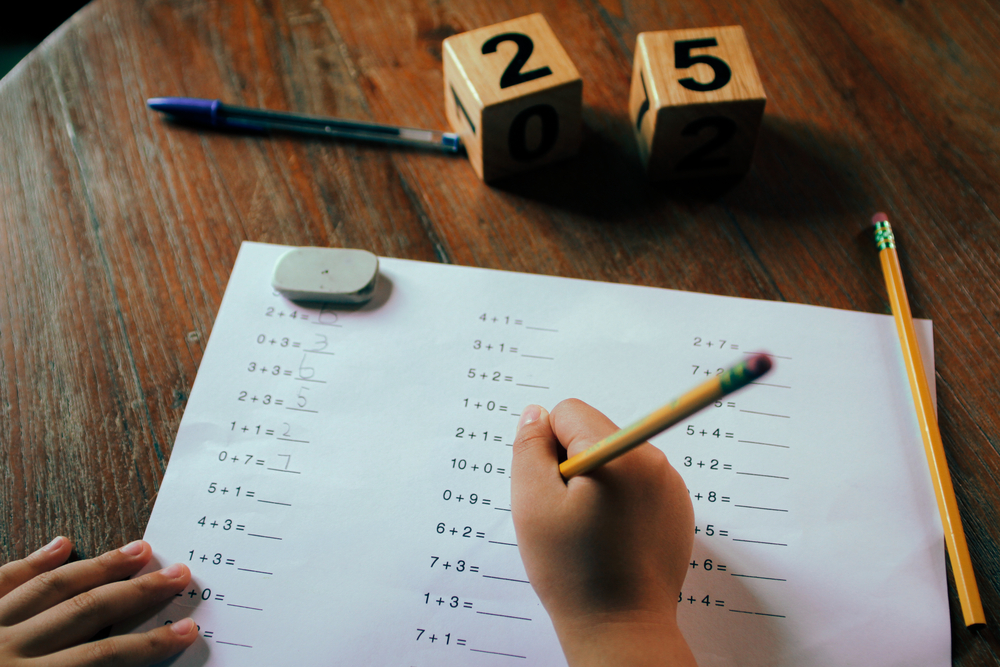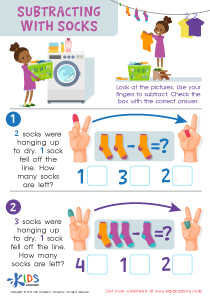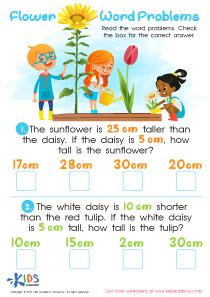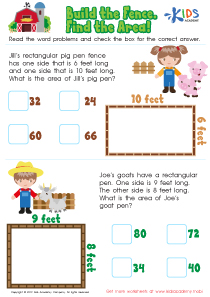Time Word Problems Worksheets for Ages 4-5
1 filtered results
-
From - To
Introduce your little ones to the concept of time with our engaging "Time Word Problems" worksheets, tailored specifically for children aged 4-5 years. Perfect for both home and classroom use, these worksheets are designed to build foundational skills in telling time through simple, fun-filled activities. Each worksheet combines clear, age-appropriate instructions with colorful illustrations to keep young learners enthralled. Ideal for developing early math skills, our worksheets help children understand hours and minutes in a playful context. Dive into our collection of school worksheets and give your child a head start in mastering the essentials of time management and problem-solving!
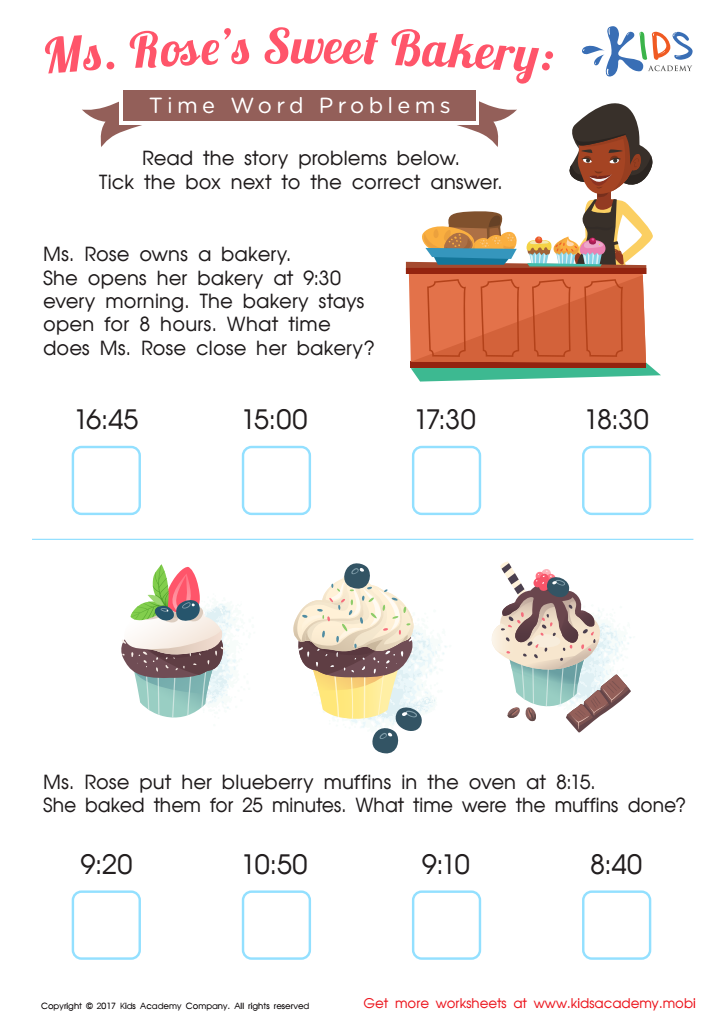

Ms. Roseв's Sweet Bakery Time Worksheet
The Value of Worksheets on Time Word Problems for Young Learners
In the formative years of a child's education, the importance of developing foundational skills cannot be overstated. Among these essential skills, understanding the concept of time is particularly crucial. This is where school printables, specifically worksheets on time word problems, come into play. Designed for children aged 4-5 years, these educational tools are instrumental in teaching young learners how to interpret and manage time effectively.
Engaging Young Minds with School Printables
School printables, such as worksheets on time word problems, are carefully crafted to cater to the learning needs of preschool children. At ages 4-5, children are just beginning to grasp the basic concepts of hours, minutes, and daily routines. Worksheets designed for this age group use simple, relatable scenarios that involve common daily activities such as having meals, playtime, or preparing for bed. By presenting these scenarios as problems to be solved, worksheets make the learning process engaging and relevant to the real world.
Building a Foundation for Future Learning
Understanding time is not only a life skill but also a fundamental mathematical concept that children will continue to explore throughout their academic journey. Early exposure to time word problems through school printables lays a solid foundation for more complex mathematical concepts and problem-solving skills. It helps children understand sequences, duration, and the cause-and-effect relationships of events within their daily routines.
Enhancing Cognitive Development
Worksheets on time word problems stimulate cognitive development in young learners. They challenge children to think critically as they analyze the problem, process information, and come up with solutions. This practice enhances their reasoning capabilities and problem-solving skills. Furthermore, working through these problems can boost a child’s confidence in their ability to understand and manage time, which is a crucial aspect of self-discipline and independence.
Supporting Varied Learning Styles
One of the great advantages of school printables is their ability to cater to different learning styles. Whether a child is a visual, auditory, or kinesthetic learner, worksheets can be designed to engage all senses. Time word problems often come with illustrations that help visual learners understand the concept better, while reading out the problems can aid auditory learners. Some worksheets also suggest physical activities like drawing clock hands, which are beneficial for kinesthetic learners.
Convenience and Flexibility
For educators and parents, school printables offer the convenience and flexibility necessary to teach a diverse group of young learners. Worksheets can be used in various settings — from the classroom to home-based learning environments. They are easy to distribute, require minimal preparation, and can be used multiple times for practice. This flexibility makes them an excellent resource for reinforcement and review, allowing children to master the concepts at their own pace.
Encouraging Parental Involvement
Worksheets on time word problems also facilitate parental involvement in their child’s education. Easy to understand and accessible, these printables allow parents to engage directly with their child's learning process. This not only helps strengthen the child’s academic skills but also enhances the parent-child relationship. By working together on these worksheets, parents can observe their child’s learning style and progress, providing support where necessary.
Cultivating a Love for Learning
Perhaps one of the most significant aspects of using school printables for teaching time is cultivating a love for learning. When children find the activities enjoyable and directly relevant to their lives, their natural curiosity is nurtured. This positive early experience with learning can inspire a lasting enthusiasm for education, setting them up for success in all future academic endeavors.
Conclusion
In conclusion, worksheets on time word problems are an excellent tool for teaching young children aged 4-5 years about the concept of time. These school printables are not only educational but also engaging, adaptable, and supportive of various learning styles. They lay a solid foundation for future mathematical learning and cognitive development, while also involving parents in the educational journey. By integrating these worksheets into early childhood education, we equip young learners with the skills they need to navigate both academic challenges and everyday life with confidence and curiosity.

 Assign to My Students
Assign to My Students


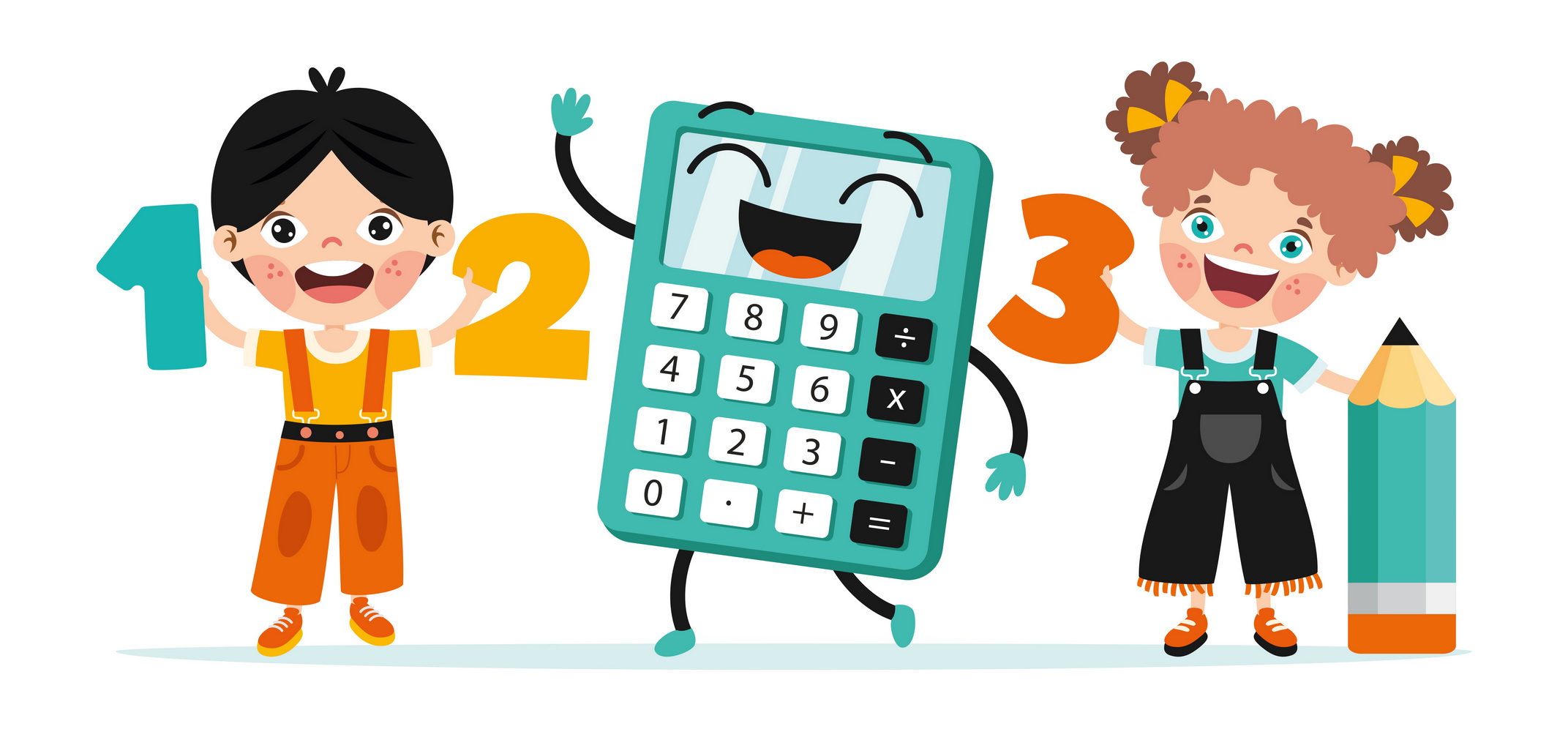
.jpg)
